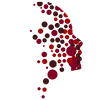It is very important that you take care of your larynx to help make (and keep) your voice functioning at it’s best.
In doing so, it is important to remember the following guidelines:
Click here for a Vocal Hygiene Protocol handout.
In doing so, it is important to remember the following guidelines:
- Drink plenty of non-caffeinated, non-alcoholic fluids - 64oz per day.
- Avoid caffeine.
- Avoid alcohol.
- DO NOT SMOKE or use other tobacco products.
- Avoid smoky environments such as bars.
- Avoid shouting and yelling.
- DO NOT raise your voice louder than normal conversational loudness.
o Instead of yelling up/down the stairs, use your feet, -and a normal loudness.
o Don’t try to compete with noise: turn the volume down on televisions and radios before you try to talk.
o Avoid talking on the phone in the car.
o Try not to talk over loud freeway and outdoor noise.
o Avoid noisy restaurants and bars.
- Give your voice a rest at the end of the day - after 5pm.
o Engage in activities that don’t involve talking: reading, watching tv, etc.
o Try to make all your phone calls before 5pm.
o Try not to answer the phone after 5pm, “let the machine get it.”
o Use email/texting as much as possible after 5pm to assist with resting your voice.
- Avoid throat drops or anything with menthol or eucalyptus, as these are very irritating to the larynx.
- Use hard candies (regular or sugar free) to keep your throat lubricated if desired. Avoid mint and sour candies.
- DO NOT whisper if your voice is bad. Hoarseness can be a sign your voice needs a break! Limit talking and write instead.
Click here for a Vocal Hygiene Protocol handout.

